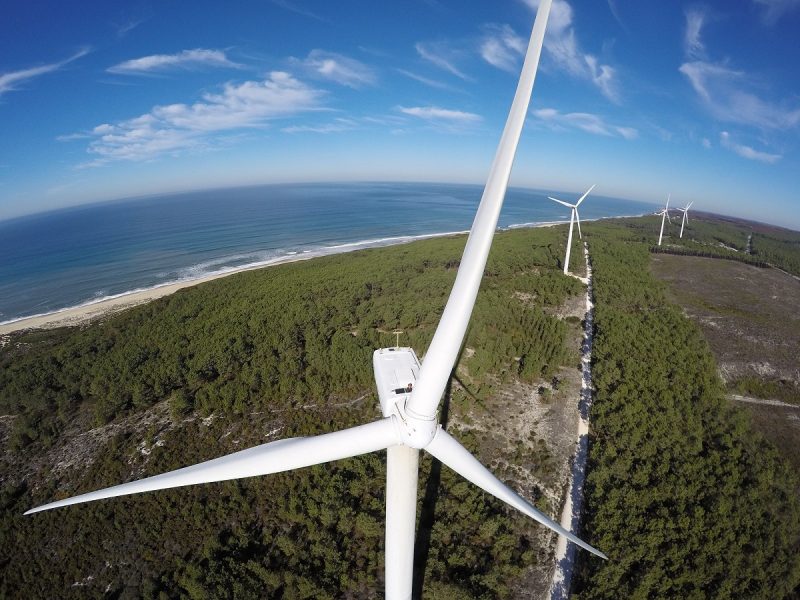
Wind power and the circular economy: How the industry is making turbine materials more sustainable
10/06/2020
People have utilised wind energy for thousands of years. However, wind turbine technology did not become popular until the early 1970s when a fuel crisis prompted governments to consider more sustainable yet equally efficient sources of energy. Since then, the wind industry has gone from strength to strength, with the total capacity of wind energy globally now reaching 651GW, after 60.4GW of capacity was installed worldwide in 2019, the second-best year historically for the technology.
How recyclable is wind?
Wind energy is now the second most widely used renewable energy source, after hydropower. Accounting for over a quarter of the world’s generation capacity, it is now recognised as one of the cleanest and most cost-competitive ways of producing energy. However, despite the technology’s growing demand, turbines do not last forever. Recognised by Wind Europe for having an average lifespan of 20-25 years, many of the world’s turbines installed during the 1990s are now reaching the end of their life expectancy. This raises the question of what happens to them once they stop working? Whilst they are excellent producers of green energy, challenges arise when it comes time to their decommissioning, as the materials used during manufacturing are inherently difficult to reuse and recycle.
Presently, wind turbines have a recyclability rate of 85-90%, with many of its components such as the gearbox, generator, foundation and tower all capable of being recycled. However, turbine blades represent a significant challenge to the environment. Made up of composite materials: older blades from glass fibre, and newer blades from carbon fibre, they are light and strong which makes them efficient. However, these very materials are extremely difficult to recycle. According to ETIP Wind, over 2.5 million tonnes of composite material are in use in this sector, and with 15,000 wind turbine blades due to be decommissioned over the next five years, making turbines 100% recyclable is of increasing importance.
Winds of change?
The recycling of blades certainly represents a challenge for the industry, with many solutions either unavailable at a commercial scale or not yet economically competitive. However, the wind industry is making significant progress towards making wind components more sustainable.
Skipping steel
Traditionally, the steel industry plays an important role in the manufacturing of turbines, with many of the turbine’s components dependant on the material for its construction. However, according to the Energy Transitions Commission, steel is responsible for 7% of worldwide greenhouse gas (GHG) emissions every year. Having recognised the material as an unnecessary pollutant, the Swedish Engineering company, Modvion, have designed an innovative turbine tower, constructed from wood but as sturdy as steel.
“We can make wind power completely carbon neutral”
With the aim of pioneering change amongst wind turbine manufacturers, CEO of Modvion, Otto Lundman, has acknowledged that they hope to place carbon neutrality and eco-friendly manufacturing at the forefront of the wind sector. The company have completed a successful pilot project, constructing a 30-metre-tall tower using a composite wood made up of 3-4 millimetre-thick layers of spruce tree grown in Nordic countries where the wooden tower is given a waterproof coating to resist weather damage. Modvion is now intent on building 110-150-metre-high turbines and aim to show other wind turbine manufactures that a full-sized wooden turbine eliminates 2000 tonnes of carbon emissions usually involved in the creation of a steel turbine.
Top of the tower
Dealing with turbine blades at the end of their lifespan has become a serious issue. For example, some wind farms in the US utilise blades that are longer than a Boeing 747 wing and so cannot be easily or inexpensively hauled away to even dispose of in a landfill which is, unfortunately, the current practice. Add to this the fact that generally, blades are built to withstand hurricane-force winds making them difficult to crush or repurpose.
Developers are also continually trying to enhance the performance of turbines and have been attempting to make blades lighter, longer, and more aerodynamic using composite materials that are not environmentally friendly. However, actions are being taken to change this. At the beginning of 2020, major manufacturer Vestas was the first major wind company to announce plans for zero-waste turbines. A company that is already sustainability centred, they are now aiming to run a value chain that generates no waste materials, by developing and implementing a new waste-management strategy. Their first step is to increase the recyclability rate of blades to 55% by 2030, by launching initiatives that look at technologies that help with composite waste, including glass fibre recycling and plastic recovery.
Currently, new blades are manufactured using carbon fibre, a material also used in aeroplanes, cars, and sports industries because of its light but sturdy nature. Global Fibreglass Solutions is now attempting to change the absence of a recovery process for retired carbon-fibre based products, including turbine blades. The company’s method involves breaking down the blades and pressing them into chocolate chip sized pellets in ovens reaching temperatures between 450 – 700C. The pellets can then be utilised in various equipment such as decking materials and piping.
Another technology in development to provide an additional end of life solution for blades is pyrolysis, a thermal process where broken down blades are placed in ovens to break apart composite fibres. These fibres are then recovered and sold to companies making items such as glue and paint.
Alongside the new, upcoming technologies, cement co-processing is a method that is already advancing the recycling solution for blades. This process partially replaces the raw material of cement with glass fibres and other composite fillers, in turn reducing the carbon dioxide (CO2) output associated with the traditional cement manufacturing process by up to 16%. As the main technology for recycling waste, industry bodies such as WindEurope are in strong support of increasing, improving and deploying this option more widely to deal with growing waste streams.
The future of wind is circular
The recyclability of wind turbine materials has found itself back in the spotlight as wind farms, both onshore and offshore continue to expand. Evidently there are two sides to consider: the carbon footprint of wind turbine materials both before and after. Increased effort is needed to minimise the carbon footprint involved during the manufacturing of turbines, but efforts must also be increased to minimise the technology’s footprint at the end of its lifespan. Ultimately, the materials we use today when building wind turbines will directly affect how we recycle them in the future. So, with the first generation of turbines now coming to an operational end, it is crucial that R&D is prioritised in order to diversify and scale-up technologies that will ultimately make wind power a greater part of the circular economy.
Interested in learning more about turbines? Check out our blog on the evolution of the technology, where we discuss its advantages and advancements or click on the button below and read about how a wind turbine actually works.

